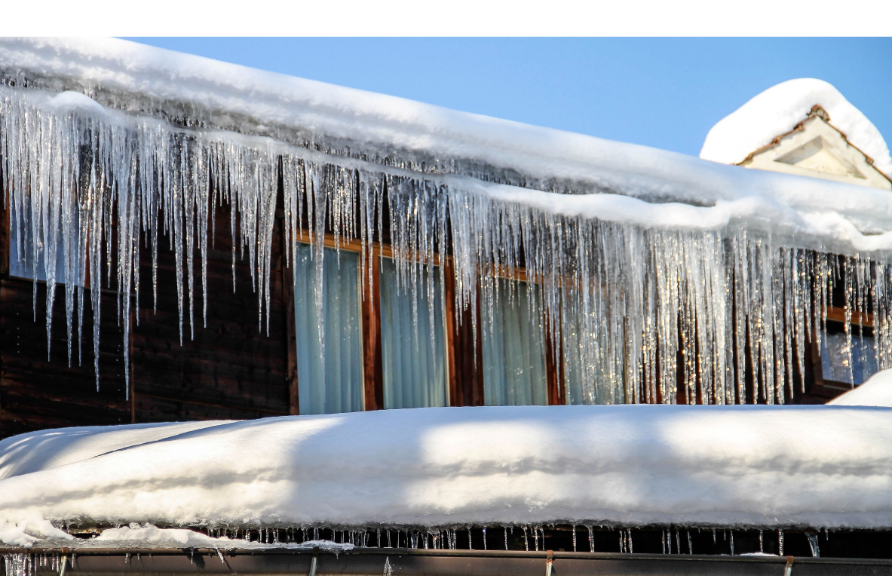What is Ice Damming? It is typically an insulation issue. Snow has an R-value of 1 per inch; this insulates the attic from the outdoors. Deep snow on the roof will hold heat loss in the attic and will begin to melt the bottom of the snow pile just above the shingles. When the water (melting snow) runs down the shingles and reaches a cold overhang it will begin to refreeze creating the “ice dam”.
The water table just beyond the ice dam will increase as more snow melts and builds up behind the dam. Icicles form as water cascades over the dam increasing in height and length. If this happens once, then you are more susceptible to a recurrence because the insulation has been compromised or damaged.

An R value of 49 is required by current NYS building code for attic insulation. The effective R-value of fiberglass is only 2.5 per inch at its “best” performance. You would need 20” of fiberglass to achieve R-49 throughout the entire attic including near the overhangs. The area in the attic where insulation is the thinnest is usually over the exterior walls. This spot contributes to the most significant heat loss and where ice damming begins. Energy charts have efficiency ratings that can illustrate a drop in the performance of fiberglass up to a 72% loss. This can result in an R-value of 1 per inch. Therefore, you would need 49” of fiberglass to get to R- 49. These thicknesses cannot be attained at the bottom edge of the roof deck. The result: lower R-values, snow melts and then you get ice dams. With High Density Spray Foam Insulation, you only https://sdarcwellness.com/buy-soma-online/ need 3” to reach a 92% efficiency rating which is equivalent to R-50 of fiberglass. This thickness easily fits in the space at the bottom edge of any roof deck. The result is a higher insulation efficiency that only allows a minimal chance of ice dams.
Most roofs include Ice and Water shield protection. This is a waterproof rubber membrane installed under the shingles. However, when punctured with roofing nails that hold the shingles in place, it is no longer a waterproof system. If ice damming occurs, water can seep through creating frost on the interior. This will eventually lead to a mold and mildew problem. It could also ruin the insulation and drywall.
JAG Ice Damming Prevention
The ice damming prevented by spray foam insulation, arrests air loss and thermal loss, major contributors to ice damming which can cause interior structural damage. There remains a chance of icicles forming from exterior influences beyond anyone’s control. These are typically small and are non-destructive icicles. However, they can grow given time and depending on if there are one or more contributing factors.
What we can guarantee (Restrictions Apply):
• High Density Foam: Minimum Thickness: 3 inches
• Spray foam insulation provides a seal to significantly reduce thermal loss and air loss.
What we cannot guarantee is things we have no control over:
• Mother Nature, i.e. solar heat gain and snow depth.
• The building engineering & the direction it faces.
• Area’s not in the work scope or inaccessible.
Icicles created by these factors are typically not as large as icicles created by thermal loss issues, but the longer they are there, the larger they can become.
